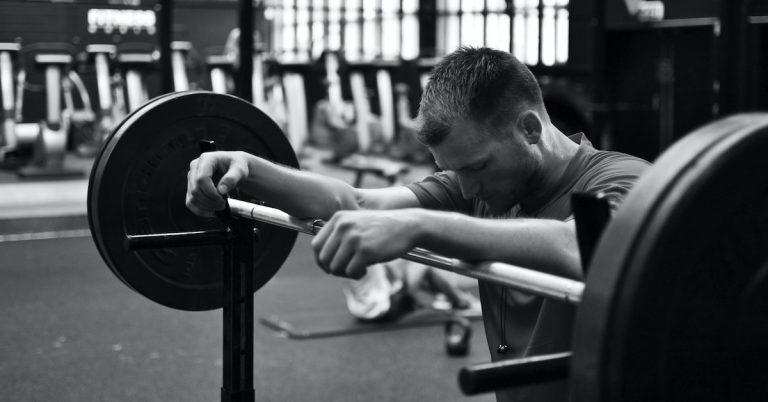I remember when I first starting lifting seriously in a commercial gym. My routine consisted of one body part a day. I would go to the gym and trash that body part! A typical two-hour workout back then was like a boxing match: I would use just about every and any exercise available to hit that body part from all angles until I knocked it out. There was nothing left by the end. Talk about overtraining!
For the most part, doing intense two-hour daily workouts can only be conducted long-term if you have some “assistance,” but still it’s not uncommon for many recreational bodybuilders, or your typical gym rat, to do one-body-part-a-day training. Whether they’re making any progress is another story!
If you truly want to thrive on that type of regimen, you need to remove the fluff that’ll ultimately deplete your energy stores, hamper recovery and promote a catabolic environment. In other words, you need to get the most results from the least number of exercises.
How many exercises does it take to accomplish BIG results?
Just one a day!
Here’s the prescription: Do two programs, one for size and one for strength. In each program you’ll do one lift a day, six days out of the week.
Routine #1 – Size Rx | Routine #2 – Strength Rx |
| Monday: Back Squat | Monday: Front Squat |
| Tuesday: Chin-Up | Tuesday: Pull-Up |
| Wednesday: Incline Barbell Press | Wednesday: Standing Military Press |
| Thursday: Hex-Bar Deadlift | Thursday: Snatch Deficit Deadlift |
| Friday: Bent-Over Barbell Row | Friday: One-Arm Dumbbell Row |
| Saturday: Parallel-Bar Dip | Saturday: Close-Grip Bench Press |
| Sunday: Off | Sunday: Off |
| Sets: 8-10 | Sets: 10-12 |
| Reps: 8-10 | Reps: 3-5 |
| Tempo: 3-0-1-0 | Tempo: 4-0-X-0 |
| Rest Interval: 3 minutes | Rest Interval: 3 minutes |
To avoid a significant decline in performance and yet maximize anabolic hormone production, both routines require three minutes of rest between sets. Research indicates that this specific rest interval allows the use of greater intensities and improves the ability to sustain repetitions resulting in a higher training volume and greater gains in muscular strength.
You can utilize this time to your benefit by stretching tight antagonistic or non-competing muscles. For example, between sets of rows you can stretch either your chest (the antagonistic muscle) or calves (a non-competing muscle), whichever requires greater attention. Static stretching works best in this case. Perform multiple sets at various angles for the tight muscle(s) and hold each stretch for only fifteen seconds. It’s more effective to use many different angles for a short duration with static stretching rather than holding one angle for a long period of time. The rule is the more intensive the stretching, the shorter its application. Check out my Stretch For Strength video presentation for more information.
And if you think that stretching between sets is used just to fill in the time, think again! Research shows that a greater amount of work can be performed after active rest compared to passive rest. During the rest interval a diverting activity, such as stretching, can facilitate faster recovery of the prime movers. The end result: flexibility of the muscles being stretched will improve over time and performance of the muscles being trained will improve immediately.
The day dictates the sets. You should make progress every workout. If you’re eating right and getting enough rest, you should be stronger right from the beginning of the workout. If that’s not the case, then you’re doing something wrong! It’s likely that your nutrition is poor or sleep is inadequate. You can’t screw around during the “off” time with this program. If you haven’t made progress on your first set and you have to skip the workout for that day, you’ll mess up the entire schedule. You must stay disciplined. If there are exams or an excessive amount of partying in the near future, don’t attempt this routine yet. Wait till things are calm and you have the time, energy and focus to concentrate on daily training and recovery.
Now although the prescription involves a high number of sets (8-10 on Routine #1 and 10-12 on Routine #2), the second your performance drops significantly from one set to the next terminate the exercise. That’s it for the day! And what’s a significant performance drop? Well it’s not uncommon to drop a rep or two per set if you’re using repetition maximum loads, which is what you should be using for this program. Don’t leave any reps in reserve. That’s why a two-rep range is given to accommodate fatigue. However, if you drop three reps or more from one set to the next, that’s significant! End there.
You should stay on each program for about 6-8 weeks or until you fail to make any real progress. After you complete both routines, you can start back on a conventional multi-exercise regimen with more frequent off days for recovery.
If your training is “hurting” these days and you have some time on your hands, try the one-lift-a-day cure. It may be exactly what the doctor ordered for larger and stronger muscles!

My Favorite Leg Finisher
Everything in context! I’m squatting with 225 pounds in the video below. It doesn’t look like much weight except that

How to Get a Biceps Vein
Growing up, all I ever wanted was the “biceps vein!” I wanted it even more than huge biceps. Of course,

Chest and Back Superset
A “super” combo to finish off an upper-body workout involves the standing cable crossover and the bent-over dumbbell lateral raise.
follow
Error: No feed with the ID 2 found.
Please go to the Instagram Feed settings page to create a feed.
